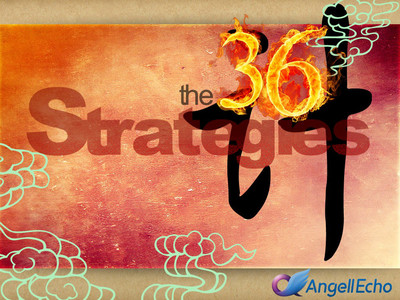修辞手法(RhetoricTechniques)系列之三十Allegory(讽喻)
Allegory is a literary devicein which characters or events in a literary, visual, or musical artform represent or symbolize ideas and concepts. Allegory has beenused widely throughout the histories of all forms of art; a majorreason for this is its immense power to illustrate complex ideasand concepts in ways that are easily digestible and tangible to itsviewers, readers, or listeners. An allegory conveys its hiddenmessage through symbolic figures, actions, imagery, and/or events.Allegory is generally treated as a figure of rhetoric; a rhetoricalallegory is a demonstrative form of representation conveyingmeaning other than the words that are spoken.
As a literary device, anallegory in its most general sense is an extended metaphor. One ofthe best known examples is Plato's "Allegory of the Cave." In thisallegory, there are a group of people who have lived chained to thewall of a cave all of their lives, facing a blank wall. The peoplewatch shadows projected on the wall by things passing in front of afire behind them and begin to ascribe forms to these shadows.According to the allegory, the shadows are as close as theprisoners get to viewing reality.
Ⅰ. Etymology
First attested in English in1382, the word allegory comes from Latin allegoria, thelatinisation of the Greek allegoria, "veiled language, figurative",from allos, "another, different" + agoreuo, "to harangue, to speakin the assembly" and that from agora, "assembly."
Ⅱ. Types
Northrop Frye discussed whathe termed a "continuum of allegory", a spectrum that ranges fromwhat he termed the "naive allegory" of The Faerie Queene, to themore private allegories of modern paradox literature. In thisperspective, the characters in a "naive" allegory are not fullythree-dimensional, for each aspect of their individualpersonalities and the events that befall them embodies some moralquality or other abstraction; the allegory has been selected first,and the details merely flesh it out.
Many ancient religions arebased on astrological allegories, that is, allegories of themovement of the Sun and the Moon as seen from the Earth. Examplesinclude the cult of Horus/Isis.
Ⅲ. Classicalallegory
In classical literature two ofthe best-known allegories are the Cave in Plato's Republic (BookVII) and the story of the stomach and its members in the speech ofMenenius Agrippa (Livyii. 32). In Late Antiquity Martianus Capellaorganized all the information a fifth-century upper-class maleneeded to know into an allegory of the wedding of Mercury andPhilologia, with the seven liberal arts as guests; Capella'sallegory was widely read through the Middle Ages.
Other early allegories arefound in the Hebrew Bible, for instance in the extended metaphor inPsalm 80 of the Vine, which is Israel and Ezekiel 16 and17.
Ⅳ. Medievalallegory
Medieval thinking acceptedallegory as having a reality underlying any rhetorical or fictionaluses. The allegory was as true as the facts of surface appearances.Thus, the bull Unam Sanctam (1302) presents themes of the unity ofChristendom with the pope as its head in which the allegoricaldetails of the metaphors are adduced as facts on which is based ademonstration with the vocabulary of logic: "Therefore of this oneand only Church there is one body and one head—not two heads as ifit were a monster... If, then, the Greeks or others say that theywere not committed to the care of Peter and his successors, theynecessarily confess that they are not of the sheep ofChrist".
In the late 15th century, theenigmatic Hypnerotomachia, with its elaborate woodcutillustrations, shows the influence of themed pageants and masqueson contemporary allegorical representation, as humanist dialecticconveyed them.
The denial of medievalallegory as found in the 11th-century works of Hugh of St Victorand Edward Topsell's Historie of Foure-footed Beastes (London,1607, 1653) and its replacement in the study of nature with methodsof categorization and mathematics by such figures as naturalistJohn Ray and the astronomer Galileo is thought to mark thebeginnings of early modern science.
Modernallegory
Since meaningful stories arenearly always applicable to larger issues, allegories may be readinto many stories, sometimes misinterpreting their author's intent.For instance, many people have suggested that The Lord of the Ringsis an allegory for the World Wars. If the requirement of realism isset aside, allegory can often be easily seen.
Some examples of thisare:
•the works of BertoltBrecht

•some works of science fiction and fantasy, such as The Chroniclesof Narnia by C.S. Lewis and A Kingdom Far and Clear: The CompleteSwan Lake Trilogy by Mark Helprin.
Ⅴ. Examples bygenre
Not every resonant work ofmodern fiction is an allegory. L. Frank Baum's The Wonderful Wizardof Oz is plot-driven fantasy narrative in an extended fable withtalking animals and broadly-sketched characters. J.R.R. Tolkien'sThe Lord of the Rings is another example of a work sometimes seenas allegorical, yet, as the author explained, it is not – rather itis an example of what he referred to asapplicability.
Ⅵ. Art
Some elaborate and successfulspecimens of allegory are to be found in the following works,arranged in approximate chronological order:
•Ambrogio Lorenzetti – Allegoria delBuono e Cattivo Governo e loro Effetti in Città e Campagna (c.1338–1339)
•Sandro Botticelli – Primavera (c.1482)
•Albrecht Dürer – Melencolia I(1514)
•Bronzino – Venus, Cupid, Folly andTime (c. 1545)
•The English School – "Allegory of Queen Elizabeth" (c.1610)
•Artemisia Gentileschi – Allegory of Inclination (c. 1620), AnAllegory of Peace and the Arts under the English Crown (1638);Self-Portrait as the Allegory of Painting (c.1638–39)
•The Feast of Herod with the Beheadingof St John the Baptist by Bartholomeus Strobel is also an allegoryof Europe in the time of theThirty Years War, with portraits ofmany leading political and militaryfigures.
•Jan Vermeer – Allegory of Painting (c.1666)
•Graydon Parrish – The Cycle of Terrorand Tragedy (2006)
•Many statues of Lady Justice: "Such visual representations haveraised the question why so many allegories in the history of art,pertaining occupations once reserved for men only, are of femalesex."
•In Rockstar's third-person crime shooter, L.A Noire (2011), thefictional protagonist is required to solve the Quarter-Moon Murdersby means of Percy B. Shelley allegories left by the murderer whocommitted the infamous Black DahliaMurder.
Ⅶ. Poetry and fiction
An allegorical story is anarrative having a second meaning beneath the surface one. Anallegorical poem has two meanings – a literal meaning and asymbolic meaning. Some unique specimens of allegory in poetry canbe found in the following works:
•Edmund Spenser – The Faerie Queene:The several knights in the poem actually stand for severalvirtues.
•John Bunyan – The Pilgrim's Progress:The journey of the protagonists Christian and Evangelist symbolisesthe ascension of the soul from earth toHeaven.
•Nathaniel Hawthorne – Young GoodmanBrown: The Devil's Staff symbolises defiance of God. Thecharacters' names, such as Goodman and Faith, ironically serve asparadox in the conclusion of the story.
•George Orwell – Animal Farm: The pigsstand for political figures of the RussianRevolution.
•Edgar Allan Poe – The Masque of theRed Death: The story can be read as an allegory how no one canevade death.
 爱华网
爱华网


